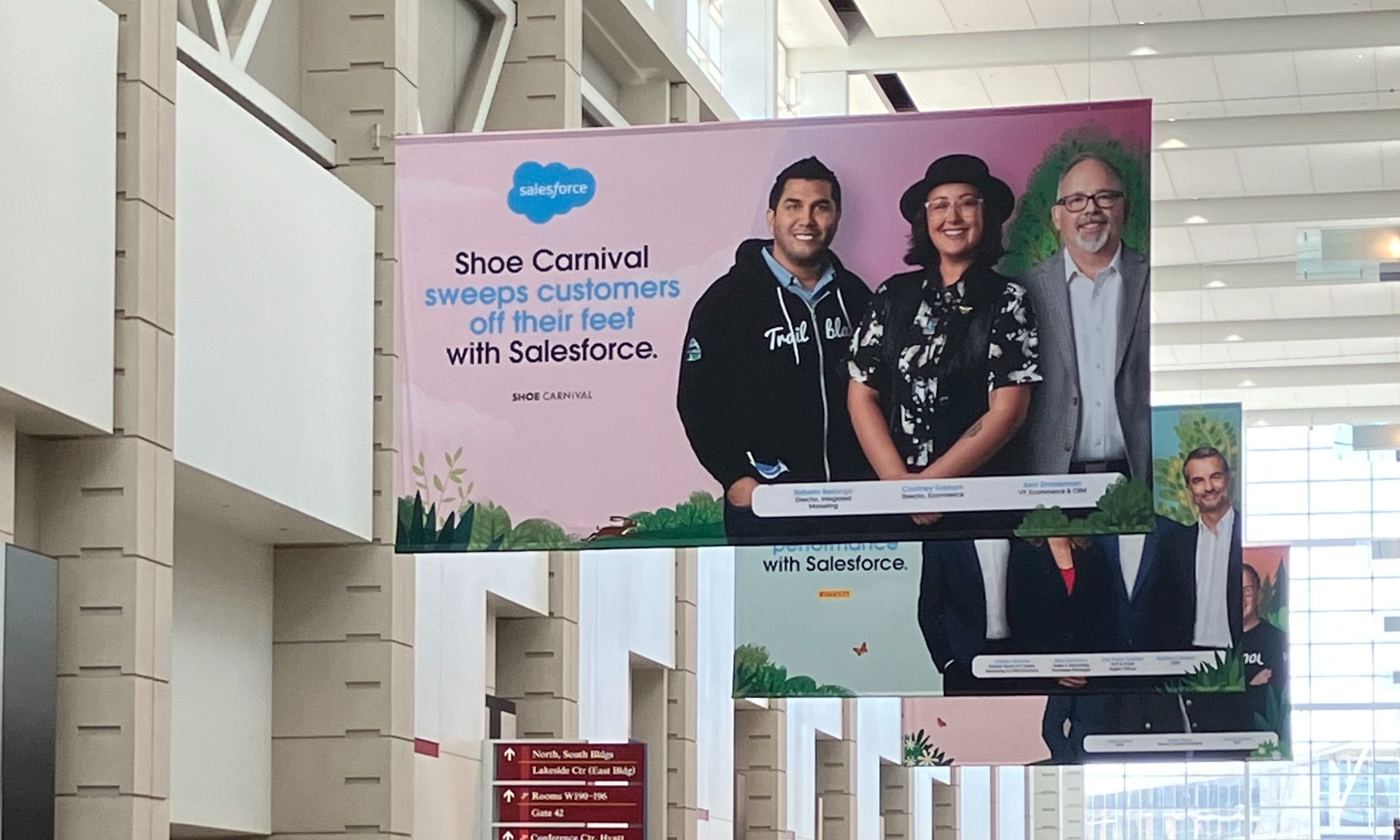MARKETING
3 recession-defeating marketing strategies

At least thrice a week, somebody asks me if our agency business has declined because of economic uncertainty. My answer: No. Enterprise companies have not slowed down or pulled back. If anything, they are accelerating.
Consider this: 17% of companies are planning RFPs this year, according to the 2023 State of the ESP RFP. You might not think that sounds like a large number, but it is if you scale that number to industries. So, that doesn’t sound like a pullback to me.
Among the clients for whom we manage RFPs, we see more requests for technology platforms that help marketers execute and innovate faster. They ask, “What can I do to insulate myself from the coming economic apocalypse if it happens by being innovative and agile?”
Below are smart decisions to improve your business, whether the economy goes sour or not.
1. Rethink that RFP
Before you replace or add technology, ask yourself whether you maxed out your current functionality. Whenever anybody asks me to start an RFP, my first question is, “Are you using everything the platform gives you right now?”
Dig deeper: Economic uncertainty means marketers will re-evaluate ad buys more frequently in 2023
A rule of thumb holds that marketers use only about 20% to 30% of what a tech platform offers. Maybe they didn’t have time to learn how to use the really cool stuff. Or the vendor didn’t offer training. Or they couldn’t get the platform to integrate with external data sources. Sometimes it doesn’t matter how innovative the platform is. It has so many other deficits that you still need to switch.
Today’s vendor marketplace makes the RFP process much more challenging if you don’t have someone to do the work. Look at what you’re paying for now but not using before beginning the time-consuming and potentially disruptive process of finding something new.
2. Develop a plan to shift your marketing priorities
Remember when, at the height of COVID, email saved ecommerce? That’s not an exaggeration. Many companies rediscovered how well email drives sales and revenue and builds customer relationships, especially during a crisis.
Your CEO might remember that. If the CEO asks how the company could change its marketing approach, what would you say?
If your email program became your company’s hero this past few years, it’s even more likely that your CEO will seek your input now. But even if it just kept on keepin’ on, you should still have a plan for the next few months that lays out your options and how you could use them for marketing against a downturn.
What to put in your plan
It shouldn’t begin and end with “Send more email.” If your customers don’t have the money to buy more often or to fill larger carts, sending more offers won’t move the revenue needle.
Look at your targeting. Consider your segmentation program. Review your price structure on promotions. What should it look like to stimulate more sales?
Dig deeper: 5 tips to get more value from your tech stack
Identify segments that can be more lucrative to target, such as regular buyers, people who buy at full price instead of waiting for sales and shoppers who send you clear purchase or upgrade intent signals.
Look for propensity to purchase. Consider developing a next-logical-purchase plan that moves beyond cross-selling or upselling.
If your CEO asks for your advice, that’s as much of a blue-sky question as you’ll ever get. So be ready to jump. Don’t stop to think about the process. Be able to respond quickly with a plan.
It could go like this: “We need to structure campaigns around our best customers’ propensity to buy in these lines. Here’s what those email campaigns would look like.”
Develop your plan now, and have it ready to go when the CEO or another high-ranking executive comes calling. But even if that call never comes, if the recession doesn’t happen, or if your customers keep buying, why not execute your plan anyway instead of doing business as usual? This is an excellent opportunity to think strategically without getting bogged down or distracted by tactics.
If you’re unsure where to start, begin with an email audit. This can help you find gaps and other weaknesses in your messaging strategy. (Get background information and details in this earlier MarTech column: 10 questions to ask when auditing your email program.)
3. Educate yourself and reach out to your community
Think about all the advice — in columns like this on MarTech, during webinars, in white papers and guides — that poured out as the business world shifted gears during the pandemic. Expect the same if the economy stutters.
Besides these thought leadership sources, you can call on your email communities for advice and ideas. These communities thrive because the members feed off each other for support and advice.
Watch the news every day. Raise your sights and educate yourself about what’s happening in the broader economy beyond your vertical. Maybe you weren’t directly affected by the mass layoffs that have rolled through the tech industry, but the repercussions could affect your company or industry.
Spend at least an hour a week reading up on everything that’s happening in email, social media and mobile marketing, in privacy legislation and customer expectations. Add to this cauldron of content news about changes in consumer behavior, the unemployment rate and the economic impact they could have.
Be informed so that when your CEO asks for your advice, you can report what’s happening in your immediate market. CEOs can call on higher-level business forecasts, but you will be the expert on your market conditions.
Wrapping up
Use these suggestions to jumpstart your own thinking. If you want to tap into the added functionalities a new vendor can provide so you can increase your business, then go for it. Suppose implementing propensity is the right strategy to improve your marketing results; get it done.
The one thing that marks a potential recession is what we saw during COVID: fast-reaction pivots that scale to a new market condition. A recession doesn’t have to be scary. But now is not the time to rely on the adage that email is recession-proof.
Keep your eye on the future. Think back to November 2019. How would you have prepared if you had known that the world would shut down three months later? You have that time now. What’s your plan?
Get MarTech! Daily. Free. In your inbox.
Opinions expressed in this article are those of the guest author and not necessarily MarTech. Staff authors are listed here.
MARKETING
YouTube Ad Specs, Sizes, and Examples [2024 Update]
![YouTube Ad Specs, Sizes, and Examples [2024 Update] YouTube Ad Specs, Sizes, and Examples](https://articles.entireweb.com/wp-content/uploads/2024/06/YouTube-Ad-Specs-Sizes-and-Examples.jpg)
Introduction
With billions of users each month, YouTube is the world’s second largest search engine and top website for video content. This makes it a great place for advertising. To succeed, advertisers need to follow the correct YouTube ad specifications. These rules help your ad reach more viewers, increasing the chance of gaining new customers and boosting brand awareness.
Types of YouTube Ads
Video Ads
- Description: These play before, during, or after a YouTube video on computers or mobile devices.
- Types:
- In-stream ads: Can be skippable or non-skippable.
- Bumper ads: Non-skippable, short ads that play before, during, or after a video.
Display Ads
- Description: These appear in different spots on YouTube and usually use text or static images.
- Note: YouTube does not support display image ads directly on its app, but these can be targeted to YouTube.com through Google Display Network (GDN).
Companion Banners
- Description: Appears to the right of the YouTube player on desktop.
- Requirement: Must be purchased alongside In-stream ads, Bumper ads, or In-feed ads.
In-feed Ads
- Description: Resemble videos with images, headlines, and text. They link to a public or unlisted YouTube video.
Outstream Ads
- Description: Mobile-only video ads that play outside of YouTube, on websites and apps within the Google video partner network.
Masthead Ads
- Description: Premium, high-visibility banner ads displayed at the top of the YouTube homepage for both desktop and mobile users.
YouTube Ad Specs by Type
Skippable In-stream Video Ads
- Placement: Before, during, or after a YouTube video.
- Resolution:
- Horizontal: 1920 x 1080px
- Vertical: 1080 x 1920px
- Square: 1080 x 1080px
- Aspect Ratio:
- Horizontal: 16:9
- Vertical: 9:16
- Square: 1:1
- Length:
- Awareness: 15-20 seconds
- Consideration: 2-3 minutes
- Action: 15-20 seconds
Non-skippable In-stream Video Ads
- Description: Must be watched completely before the main video.
- Length: 15 seconds (or 20 seconds in certain markets).
- Resolution:
- Horizontal: 1920 x 1080px
- Vertical: 1080 x 1920px
- Square: 1080 x 1080px
- Aspect Ratio:
- Horizontal: 16:9
- Vertical: 9:16
- Square: 1:1
Bumper Ads
- Length: Maximum 6 seconds.
- File Format: MP4, Quicktime, AVI, ASF, Windows Media, or MPEG.
- Resolution:
- Horizontal: 640 x 360px
- Vertical: 480 x 360px
In-feed Ads
- Description: Show alongside YouTube content, like search results or the Home feed.
- Resolution:
- Horizontal: 1920 x 1080px
- Vertical: 1080 x 1920px
- Square: 1080 x 1080px
- Aspect Ratio:
- Horizontal: 16:9
- Square: 1:1
- Length:
- Awareness: 15-20 seconds
- Consideration: 2-3 minutes
- Headline/Description:
- Headline: Up to 2 lines, 40 characters per line
- Description: Up to 2 lines, 35 characters per line
Display Ads
- Description: Static images or animated media that appear on YouTube next to video suggestions, in search results, or on the homepage.
- Image Size: 300×60 pixels.
- File Type: GIF, JPG, PNG.
- File Size: Max 150KB.
- Max Animation Length: 30 seconds.
Outstream Ads
- Description: Mobile-only video ads that appear on websites and apps within the Google video partner network, not on YouTube itself.
- Logo Specs:
- Square: 1:1 (200 x 200px).
- File Type: JPG, GIF, PNG.
- Max Size: 200KB.
Masthead Ads
- Description: High-visibility ads at the top of the YouTube homepage.
- Resolution: 1920 x 1080 or higher.
- File Type: JPG or PNG (without transparency).
Conclusion
YouTube offers a variety of ad formats to reach audiences effectively in 2024. Whether you want to build brand awareness, drive conversions, or target specific demographics, YouTube provides a dynamic platform for your advertising needs. Always follow Google’s advertising policies and the technical ad specs to ensure your ads perform their best. Ready to start using YouTube ads? Contact us today to get started!
MARKETING
Why We Are Always ‘Clicking to Buy’, According to Psychologists

Amazon pillows.
MARKETING
A deeper dive into data, personalization and Copilots

Salesforce launched a collection of new, generative AI-related products at Connections in Chicago this week. They included new Einstein Copilots for marketers and merchants and Einstein Personalization.
To better understand, not only the potential impact of the new products, but the evolving Salesforce architecture, we sat down with Bobby Jania, CMO, Marketing Cloud.
Dig deeper: Salesforce piles on the Einstein Copilots
Salesforce’s evolving architecture
It’s hard to deny that Salesforce likes coming up with new names for platforms and products (what happened to Customer 360?) and this can sometimes make the observer wonder if something is brand new, or old but with a brand new name. In particular, what exactly is Einstein 1 and how is it related to Salesforce Data Cloud?
“Data Cloud is built on the Einstein 1 platform,” Jania explained. “The Einstein 1 platform is our entire Salesforce platform and that includes products like Sales Cloud, Service Cloud — that it includes the original idea of Salesforce not just being in the cloud, but being multi-tenancy.”
Data Cloud — not an acquisition, of course — was built natively on that platform. It was the first product built on Hyperforce, Salesforce’s new cloud infrastructure architecture. “Since Data Cloud was on what we now call the Einstein 1 platform from Day One, it has always natively connected to, and been able to read anything in Sales Cloud, Service Cloud [and so on]. On top of that, we can now bring in, not only structured but unstructured data.”
That’s a significant progression from the position, several years ago, when Salesforce had stitched together a platform around various acquisitions (ExactTarget, for example) that didn’t necessarily talk to each other.
“At times, what we would do is have a kind of behind-the-scenes flow where data from one product could be moved into another product,” said Jania, “but in many of those cases the data would then be in both, whereas now the data is in Data Cloud. Tableau will run natively off Data Cloud; Commerce Cloud, Service Cloud, Marketing Cloud — they’re all going to the same operational customer profile.” They’re not copying the data from Data Cloud, Jania confirmed.
Another thing to know is tit’s possible for Salesforce customers to import their own datasets into Data Cloud. “We wanted to create a federated data model,” said Jania. “If you’re using Snowflake, for example, we more or less virtually sit on your data lake. The value we add is that we will look at all your data and help you form these operational customer profiles.”
Let’s learn more about Einstein Copilot
“Copilot means that I have an assistant with me in the tool where I need to be working that contextually knows what I am trying to do and helps me at every step of the process,” Jania said.
For marketers, this might begin with a campaign brief developed with Copilot’s assistance, the identification of an audience based on the brief, and then the development of email or other content. “What’s really cool is the idea of Einstein Studio where our customers will create actions [for Copilot] that we hadn’t even thought about.”
Here’s a key insight (back to nomenclature). We reported on Copilot for markets, Copilot for merchants, Copilot for shoppers. It turns out, however, that there is just one Copilot, Einstein Copilot, and these are use cases. “There’s just one Copilot, we just add these for a little clarity; we’re going to talk about marketing use cases, about shoppers’ use cases. These are actions for the marketing use cases we built out of the box; you can build your own.”
It’s surely going to take a little time for marketers to learn to work easily with Copilot. “There’s always time for adoption,” Jania agreed. “What is directly connected with this is, this is my ninth Connections and this one has the most hands-on training that I’ve seen since 2014 — and a lot of that is getting people using Data Cloud, using these tools rather than just being given a demo.”
What’s new about Einstein Personalization
Salesforce Einstein has been around since 2016 and many of the use cases seem to have involved personalization in various forms. What’s new?
“Einstein Personalization is a real-time decision engine and it’s going to choose next-best-action, next-best-offer. What is new is that it’s a service now that runs natively on top of Data Cloud.” A lot of real-time decision engines need their own set of data that might actually be a subset of data. “Einstein Personalization is going to look holistically at a customer and recommend a next-best-action that could be natively surfaced in Service Cloud, Sales Cloud or Marketing Cloud.”
Finally, trust
One feature of the presentations at Connections was the reassurance that, although public LLMs like ChatGPT could be selected for application to customer data, none of that data would be retained by the LLMs. Is this just a matter of written agreements? No, not just that, said Jania.
“In the Einstein Trust Layer, all of the data, when it connects to an LLM, runs through our gateway. If there was a prompt that had personally identifiable information — a credit card number, an email address — at a mimum, all that is stripped out. The LLMs do not store the output; we store the output for auditing back in Salesforce. Any output that comes back through our gateway is logged in our system; it runs through a toxicity model; and only at the end do we put PII data back into the answer. There are real pieces beyond a handshake that this data is safe.”
-

 SEO7 days ago
SEO7 days agoGoogle’s Revamped Documentation Shows 4 Reasons To Refresh Content
-
SEARCHENGINES5 days ago
Daily Search Forum Recap: August 26, 2024
-

 SEARCHENGINES7 days ago
SEARCHENGINES7 days agoGoogle Ranking Bug Fixed, August Core Update Swings, AI Overviews, Google Ads Bug & More
-
SEARCHENGINES4 days ago
Daily Search Forum Recap: August 27, 2024
-

 WORDPRESS7 days ago
WORDPRESS7 days agoHow to Secure Your WordPress Store
-

 AFFILIATE MARKETING7 days ago
AFFILIATE MARKETING7 days agoBusiness Owners are Batting 1,000 With This All-in-One Management Hub
-

 SEARCHENGINES6 days ago
SEARCHENGINES6 days agoGoogle Migrating All To Google Merchant Center Next By September
-

 WORDPRESS5 days ago
WORDPRESS5 days ago10 Best StudioPress Alternatives (Genesis Framework)














